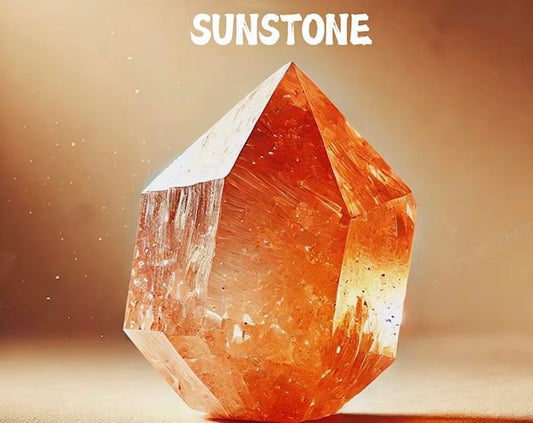What Is Merkaba Meditation? Sacred Geometry & Spiritual Awakening
By Elara QuinnInside this Article:
- What Is Merkaba Meditation?
- The Ancient Roots of Merkaba Meditation
- The Science Behind Merkaba Meditation
- Benefits of Merkaba Meditation
- How to Practice Merkaba Meditation: A Step-by-Step Guide
- Common Challenges & Solutions
- Merkaba Meditation vs. Other Practices
- FAQs About Merkaba Meditation
- Final Thoughts
If you’ve explored meditation practices, you’ve likely encountered terms like “ chakras, ” “ third eye, ” or “ energy fields. ” But Merkaba meditation stands out as a unique practice rooted in ancient mysticism, sacred geometry, and transformative energy work. In this guide, we’ll dive deep into what Merkaba meditation is, its origins, benefits, and how to practice it effectively. Whether you’re a seasoned meditator or a curious beginner, this guide offers actionable insights to help you harness the power of the Merkaba.
What Is Merkaba Meditation?
The term “ Merkaba ” (also spelled Merkabah or Merkahbah) originates from Hebrew, meaning “ chariot. ” In ancient texts like the Book of Ezekiel, it symbolizes a divine vehicle carrying God’s throne. However, in meditation, Merkaba takes on a multidimensional meaning:
- Mer = Light
- Ka = Spirit
- Ba = Body
Together, these elements represent a spiritual light vehicle—an energy field combining sacred geometry (a star tetrahedron) with conscious intention. Practitioners believe activating the Merkaba connects the physical body with higher consciousness, enabling spiritual ascension, healing, and even interdimensional exploration.
The Ancient Roots of Merkaba Meditation
Merkaba’s symbolism spans multiple cultures and eras, making it a bridge between spirituality and science:
-
Egyptian Influence
The Great Pyramid of Giza is often linked to Merkaba’s star tetrahedron shape. Ancient Egyptians viewed pyramids as conduits for cosmic energy, aligning with the sun and stars. -
Hebrew Mysticism
Kabbalistic texts describe the Merkaba as a mystical chariot for divine encounters, emphasizing its role in transcending earthly limitations. -
Atlantean and Sumerian Connections
Some esoteric traditions suggest Merkaba knowledge originated in Atlantis or Sumeria, where advanced civilizations used sacred geometry to access universal wisdom. -
Modern Revival
Drunvalo Melchizedek, a contemporary spiritual teacher, popularized Merkaba meditation in the 1990s, blending ancient wisdom with modern energy practices.
The Science Behind Merkaba Meditation
While Merkaba meditation is deeply spiritual, its principles align with scientific concepts:
- Sacred Geometry: The star tetrahedron (two interlocked pyramids) mirrors molecular structures like the carbon atom, symbolizing balance and unity.
- Energy Fields: Quantum physics suggests everything vibrates at specific frequencies. Merkaba meditation aims to harmonize personal energy fields with universal vibrations.
- Neuroplasticity: Regular practice may enhance brain function, improving focus, emotional regulation, and stress resilience.
Benefits of Merkaba Meditation
Beyond spiritual growth, Merkaba meditation offers tangible benefits for mind, body, and soul:
- Emotional Healing:Reduces anxiety, depression, and stress by clearing stagnant energy.Balances the nervous system, promoting calmness.
- Physical Wellness:Enhances sleep quality and energy levels.Supports weight loss by aligning intrinsic motivation (mind-body connection).
- Spiritual Awakening:Activates higher consciousness and intuition.Facilitates astral travel and connection to universal energy.
- Cognitive Clarity:Improves focus, creativity, and decision-making through heightened awareness.
How to Practice Merkaba Meditation: A Step-by-Step Guide
Preparation
- Set Intentions: Clarify your purpose (e.g., healing, spiritual growth).
- Create a Sacred Space: Use crystals (like clear quartz or amethyst), candles, or calming music.
The 18-Breath Technique
- Breathing Rhythm: Inhale for 7 seconds, exhale for 7 seconds. Repeat 18 times.
- Mudras (Hand Gestures):Thumb touches index, middle, ring, and little fingers in sequence (first 4 breaths).Palms face upward from the 7th breath onward.
- Visualization:Imagine a white light enveloping your body.Visualize two counter-rotating tetrahedrons around you, merging into a spinning Merkaba.
- Activation: On the 15th breath, focus on accelerating the tetrahedrons’ spin to “ ignite ” your Merkaba.
Closing
- Express gratitude and ground yourself by touching the earth or eating a light snack.
Common Challenges & Solutions
- Mental Distractions:Use guided Merkaba meditations (apps like Aura or Insight Timer offer tracks).
- Physical Discomfort:Practice seated on a cushion or chair to maintain posture.
- Lack of Immediate Results:Consistency is key! Aim for 20-minute sessions, 3-4 times weekly.
Merkaba Meditation vs. Other Practices
- Mindfulness Meditation: Focuses on present-moment awareness; Merkaba adds geometric visualization and energy work.
- Chakra Meditation: Targets energy centers; Merkaba unifies them into a cohesive field.
- Yoga Nidra: Induces deep relaxation; Merkaba aims for active spiritual ascension.
FAQs About Merkaba Meditation
Q: Is Merkaba meditation religious?
A: While rooted in ancient traditions, it’s accessible to all beliefs. Focus on universal energy, not dogma.
Q: Can beginners practice Merkaba meditation?
A: Yes! Start with shorter sessions and use guided resources.
Q: How long until I see results?
A: Some feel shifts immediately; others need weeks. Trust your unique journey.
Q:What else application Merkaba can be used for?
A: You can refer to What is a merkaba used for .
Final Thoughts
Merkaba meditation is more than a practice—it’s a journey into the heart of sacred geometry and your limitless potential. By integrating breath, intention, and visualization, you unlock a portal to higher realms of existence. Whether seeking emotional balance, spiritual growth, or cosmic connection, the Merkaba lights the way.



